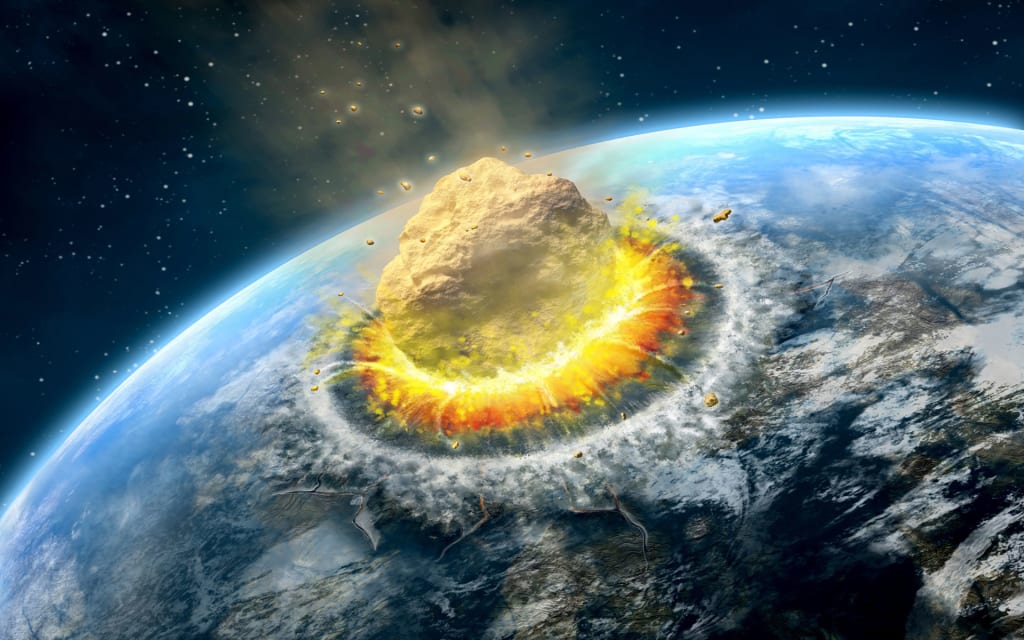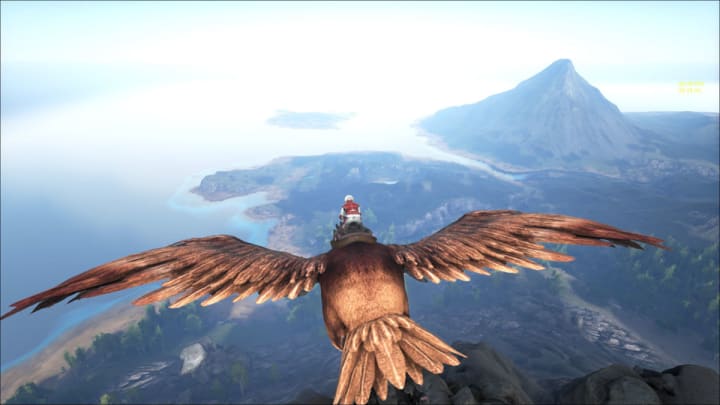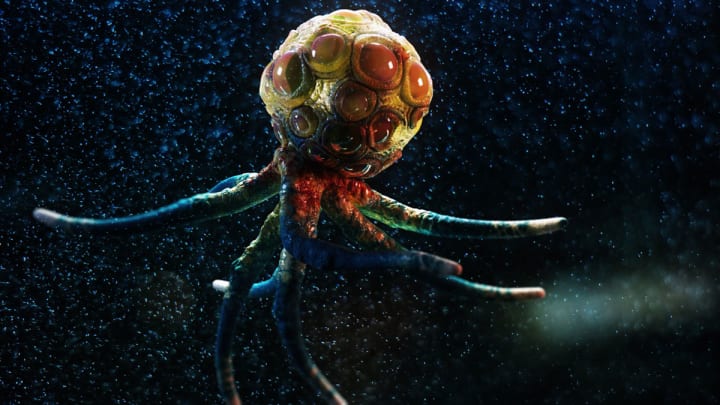Who Will Survive the Next Biotic Crisis?
If the future inevitably holds further extinction events then man may not remain the dominant species.

While the next biotic event is probably not in the near future, fossil records clearly testify that extinction is an unavoidable fate for all species. The real question remains: what is left in the wake of mankind? Our lineage is more likely to be altered through evolution than entirely snuffed out.
Imagine that changes spurred by global warming caused some nightmarishly virulent disease to be released from the tropics and quickly wipe us out, while leaving many other species intact. Would anything like us come to dominate the planet again? With humanity out of the picture, who will inherit the Earth?
Extinction of Man - Evolution of Rats

Image via Siva Therium
Being terrestrial mammals that we are, it’s natural for us to look among our furry kin for possible successors. Rats would seem to be an obvious choice. They’re ubiquitous, already suited to the urban landscapes we’ve created, and smart enough to be laboratory mainstays in the study of our own brains. If an extinction totally cleared house, perhaps a few million years of evolution would produce intelligent rat societies that borrow scrap from the ruins of the world as we know it.
But when I asked mammal expert Anne Weil, of Oklahoma State University’s Center for Health Sciences, for her vote on a mammal to replace us, she didn’t pick quite as obvious a beast. “In a warmer world without people, red kangaroos could evolve into a species not unlike humans,” Weil says. This grates against our placental mammal bias. As top placental mammals ourselves, we’ve often cast marsupials as oddballs that are slowly fading away. But Weil makes a compelling case for a kangaroo comeback.
Can Kangaroos Make a Jump in the Food Chain?

Image via Ark Survival Evolved
Red kangaroos have a good deal of potential. While their forepaws would have to be adapted to manipulate objects more deftly, Weil says, kangaroos “have freed up their forelimbs from locomotion.” That means they could evolve the capacity to make and use tools in a way similar to our own ancestors. Red kangaroos are also social, breed year round, can travel long distances, and have relatively long lives–up to 27 years. Our ancestors shared these qualities, although red kangaroos also have a unique edge. “Their real advantage over other mammalian lineages,” Weil says, “is the ability to arrest development of an embryo in the blastula stage in case of drought or food shortage.” Handy if you’ve got long-term survival in mind.
If an extinction totally cleared house, perhaps a few million years of evolution would produce intelligent rat societies that borrow scrap from the ruins of the world as we know it.
Kangaroos aren’t perfect candidates, though. “Marsupials are in general not very smart, compared to primates,” Weil says, “and although kangaroos have a long enough lifespan to learn a lot of things, they are not currently among those mammals thought to have the greatest learning ability, nor do they have more than basic communications.” Evolution would have to grant kangaroos larger brain size, which would require changes to the way the skulls of these marsupials grow in their infancy.
Age of Mammals

Image via Arkrp
But who’s to say that the Age of Mammals–which has been going on for the last 66 million years–will continue? Or, for that matter, if it’s even an apt title. In the geological timescale, the Age of Mammals is supposed to follow the roughly 179 million year old Age of Dinosaurs, but dinosaurs are still with us in the form of birds. Birds, after all, are the sole surviving lineage of the dinosaurs, and number over 10,000 species worldwide. Among those flocks, crows are some of the most astonishingly intelligent.
Much like rats, crows are used to living alongside us. They even use our world to their advantage—dropping nuts in front of cars to make us do the dirty work, for example, or using the steep angle of snow-covered car windshields to play. But some crows are even smarter still. New Caledonian crows, in particular, have shown startling intelligence. Perhaps their most striking ability is knowing how to use tools for more than one task. Not only do these birds use twigs to roust grubs from tree bark, but a lab study suggests that they sometimes use those same tools for different tasks–such as poking a garishly-colored rubber snake a researcher has put in their enclosure. Such an ability to use the same tool for multiple uses is rare.
Given their intelligence, social lives, and tool-using abilities, New Caledonian crows could conceivably create a new kind of culture and society that matches ours in complexity, but is distinct in its feathery features. An era of highly-intelligent dinosaurs could become a reality.
Yet, while more distantly related to us, birds are still vertebrates. And they are outnumbered. Looking among the invertebrates that share the world, there are over 14,000 species of ants alone. That’s a lot to choose from. And with memories of the enormous mutant ants in THEM!, I asked Smithsonian Institution entomologist Mark Moffett about whether ants might have a bid for future dominance. Forget the future, he said—Ants are dominating the Earth today.
“Ants match humans in overall weight, and are a million times as numerous as individuals, so ants already are the dominant form of life,” Moffett says. Perhaps we already live in the Age of Ants, especially in the case of tough contenders like invasive ant species which, Moffett says, “are already taking over the world at our feet.” Among the most impressive is the Argentine ant. From the time it arrived a century ago, this unassuming-looking ant has spread over much of southern California. “The amazing part is that all of southern California is occupied by just four societies of this ant, the largest ‘supercolony’ of which ranges from San Francisco to the Mexican border and contains perhaps a trillion individuals,” Moffett says. These ants don’t care a whit that we think ourselves more important. “At their size scale, ants like the Argentine control about everything, indifferent as to whether people exist or not,” Moffett says. Given their sheer numbers and success so far, such ants will likely continue their reign regardless of whether a species evolves again evolves enough intelligence to ponder this point.
But let’s pull back further still. Mammals, birds, and ants are all tied to the land, but most of the planet is ocean. There may very well be a contender for our successor among the unfathomable number of species in the seas. Cephalopods immediately stand out from all the rest. Their numbers aren’t quite so impressive as those of the ants–only about 800 species of squid, octopus, and their relatives have been named–but they make up for any lack of numbers with their intelligence.
Cephalopods

Image via 3D Total
Our language evolved to be heard. Cephalopod communication evolved to be seen. Cuttlefish, for example, are not only masters of camouflage, but seem to ripple with quick-change colors that are picked up by their large eyes and are considered by their impressively large brains. And cephalopods have the smarts to back up that size. In nature, they are deft mimics, and in the lab they are not only experts at solving puzzles such as mazes, but are smart enough to thwart researchers when they don’t feel like performing. Octopus, especially, may be the smartest invertebrates on the planet, with eight sensitive arms that allow them to sense the world around them and solve problems.OCTOPUSES ARE AN UNIQUELY ALIEN INTELLIGENCE ALREADY PRESENT ON OUR PLANET. THERE IS POTENTIAL IN THE FUTURE OF THE CEPHALOPODS.
Of course, evolution may not spin off another intelligence to rival the human race. In the roughly 3.6 billion year-old history of life on Earth, something like us is a one-off and a late arrival. After all, we didn’t have to exist. There’s no inherent reason to expect that another species will take up our mantle. Especially if organisms such as ants are already running the show beneath our feet and in spite of our snooty vertebrate bias. But with an estimated 1.75 billion years left before the Earth may become inhospitable to life, strange and wonderful things can happen. Maybe, from that mix of time and change, there will be another species that will be able to look at itself—and wonder what the distant future holds.
About the Creator
Brian Switek
Brian is the author of My Beloved Brontosaurus, Written in Stone, and other books. He also writes the Laelaps blog for Scientific American and publishes on fossil discoveries in outlets from Smithsonian to the Wall Street Journal.






Comments
There are no comments for this story
Be the first to respond and start the conversation.